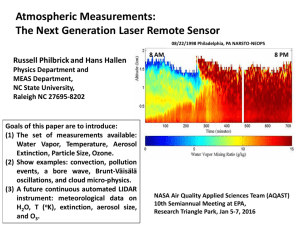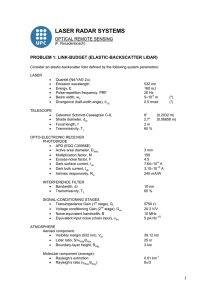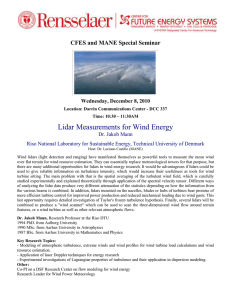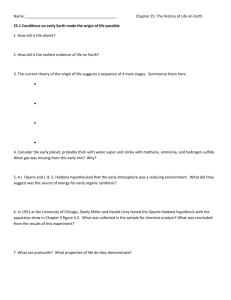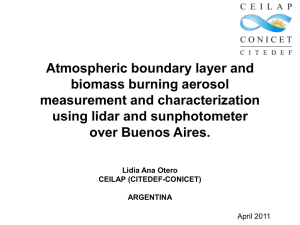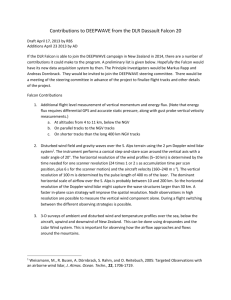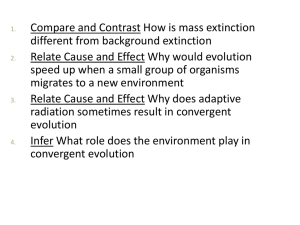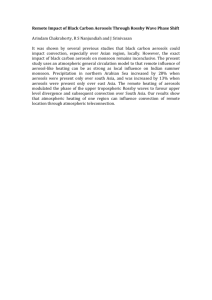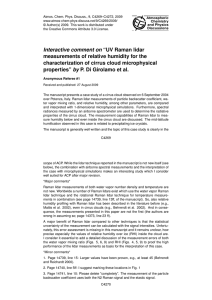Sizing and Ranging Aerosol Distributions using combined Lidar and
advertisement
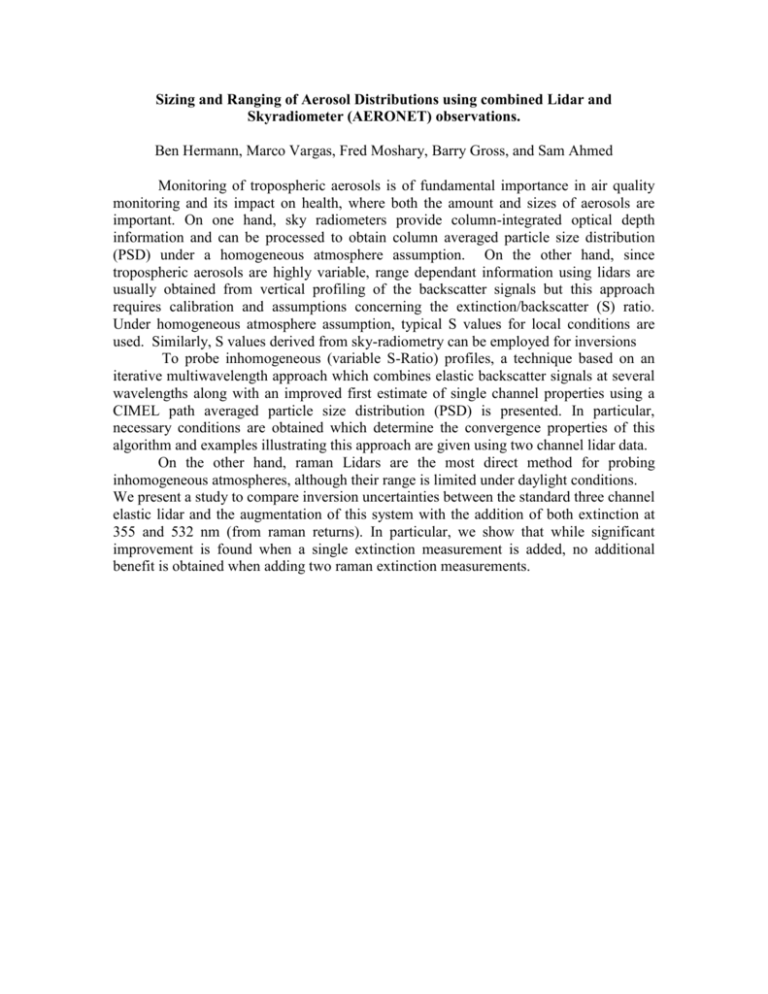
Sizing and Ranging of Aerosol Distributions using combined Lidar and Skyradiometer (AERONET) observations. Ben Hermann, Marco Vargas, Fred Moshary, Barry Gross, and Sam Ahmed Monitoring of tropospheric aerosols is of fundamental importance in air quality monitoring and its impact on health, where both the amount and sizes of aerosols are important. On one hand, sky radiometers provide column-integrated optical depth information and can be processed to obtain column averaged particle size distribution (PSD) under a homogeneous atmosphere assumption. On the other hand, since tropospheric aerosols are highly variable, range dependant information using lidars are usually obtained from vertical profiling of the backscatter signals but this approach requires calibration and assumptions concerning the extinction/backscatter (S) ratio. Under homogeneous atmosphere assumption, typical S values for local conditions are used. Similarly, S values derived from sky-radiometry can be employed for inversions To probe inhomogeneous (variable S-Ratio) profiles, a technique based on an iterative multiwavelength approach which combines elastic backscatter signals at several wavelengths along with an improved first estimate of single channel properties using a CIMEL path averaged particle size distribution (PSD) is presented. In particular, necessary conditions are obtained which determine the convergence properties of this algorithm and examples illustrating this approach are given using two channel lidar data. On the other hand, raman Lidars are the most direct method for probing inhomogeneous atmospheres, although their range is limited under daylight conditions. We present a study to compare inversion uncertainties between the standard three channel elastic lidar and the augmentation of this system with the addition of both extinction at 355 and 532 nm (from raman returns). In particular, we show that while significant improvement is found when a single extinction measurement is added, no additional benefit is obtained when adding two raman extinction measurements.
